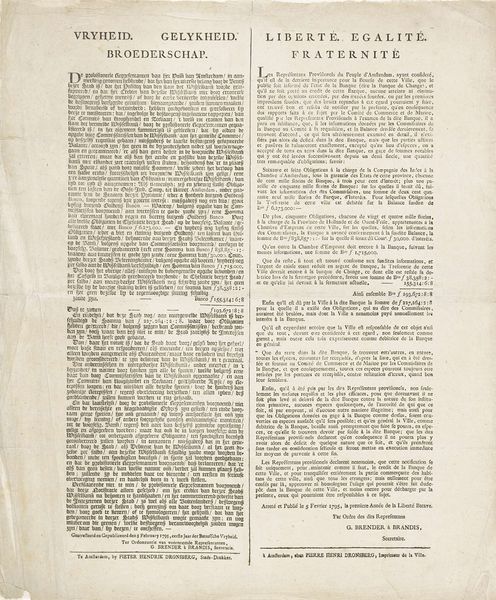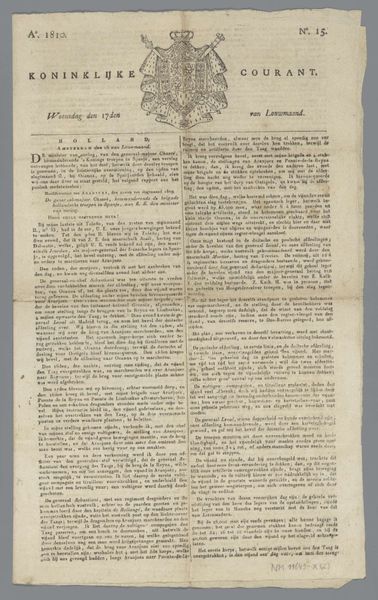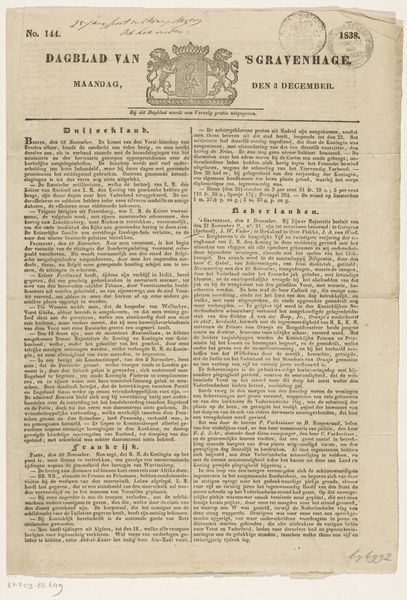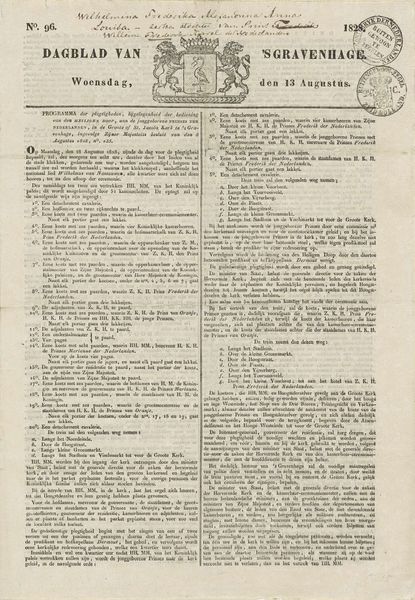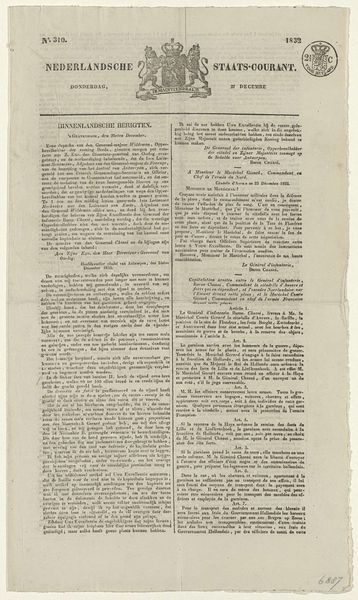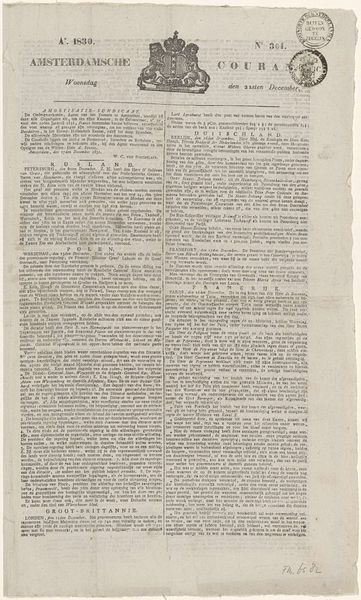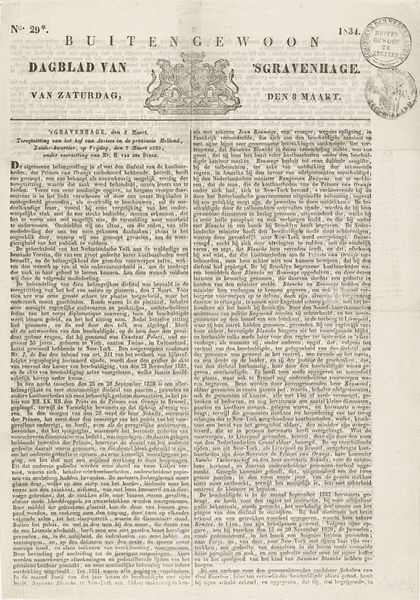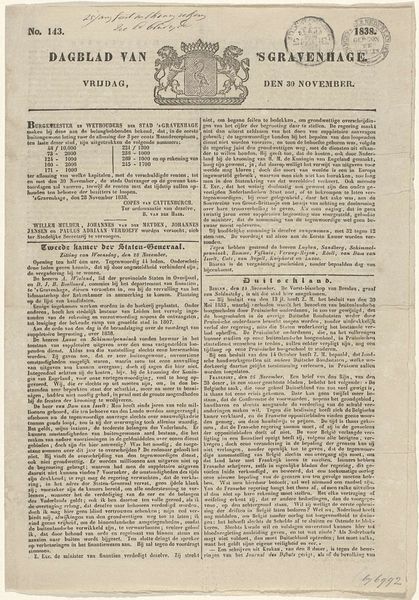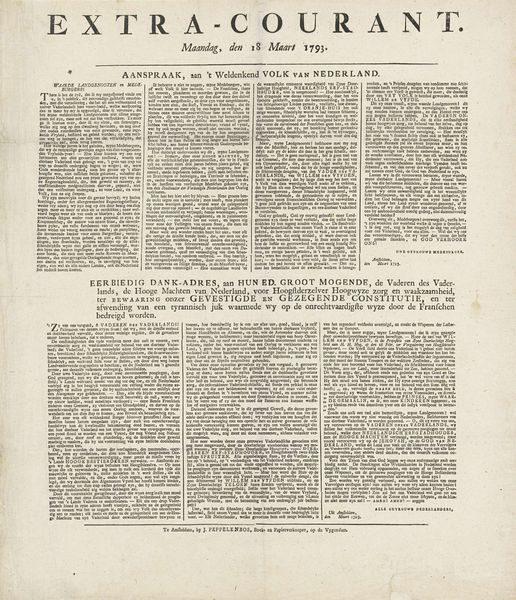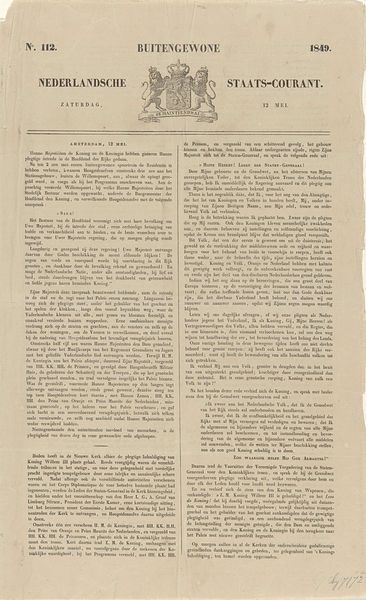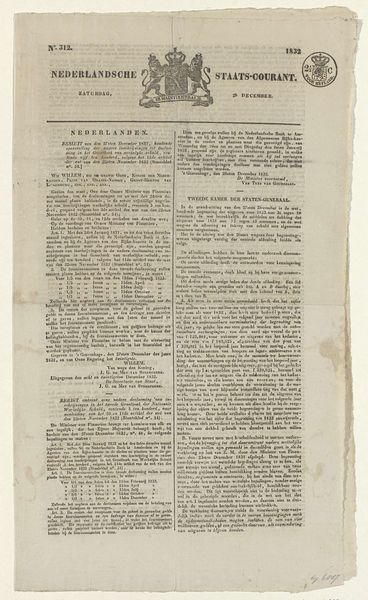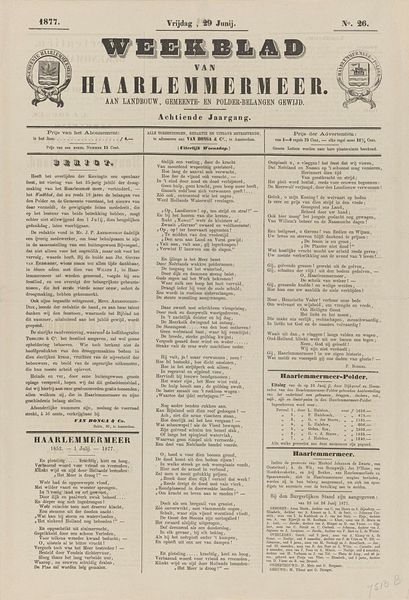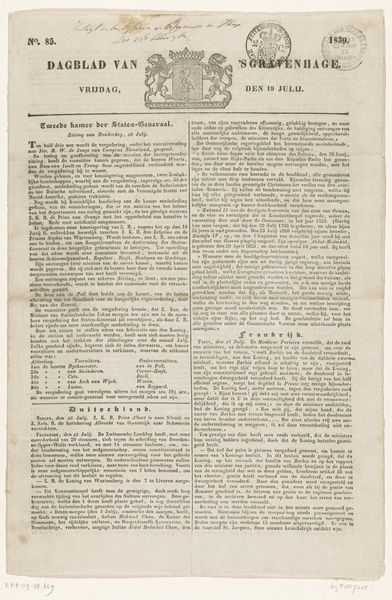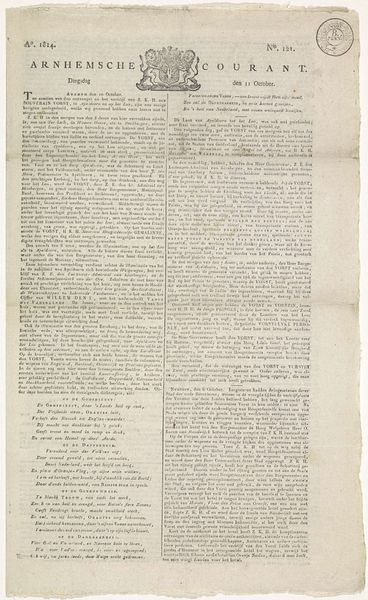
Overdruk van de 's Gravenhaagse Extra-Courant van 26 januari 1793 Possibly 1893
0:00
0:00
print, textile, typography
#
dutch-golden-age
# print
#
textile
#
typography
Dimensions: height 350 mm, width 255 mm
Copyright: Rijks Museum: Open Domain
This is a reprint of 's Gravenhaagse Extra-Courant newspaper from January 26, 1793, printed by erven J.L. Nierstrasz, covering the trial of Louis XVI. The most striking symbol here is surely the royal coat of arms at the top, replete with lions, crown, and heraldic shield. This symbol, designed to project power and legitimacy, is turned on its head by the news it announces: the trial of Louis XVI. The lion motif, for instance, appears across time in different cultures, from ancient Mesopotamia to medieval Europe, generally representing courage and royalty. But here, the lion's roar is silenced, his power eclipsed by the revolutionary fervor. The crown, usually a symbol of divine right, is now threatened. Consider how the symbol of the crown recurs through history, from laurel wreaths in ancient Rome to jeweled crowns in monarchies. Each iteration reflects the prevailing power structures and cultural values. The emotional power lies in the stark contrast: a symbol of enduring authority now stands as a relic against the tide of revolution. It shows how collective memory and subconscious processes can shape our interpretation of symbols. The coat of arms reflects a past order on the brink of collapse. The cyclical progression of symbols like these, how they resurface, evolve, and take on new meanings in different historical contexts, will never cease to fascinate me.
Comments
No comments
Be the first to comment and join the conversation on the ultimate creative platform.
